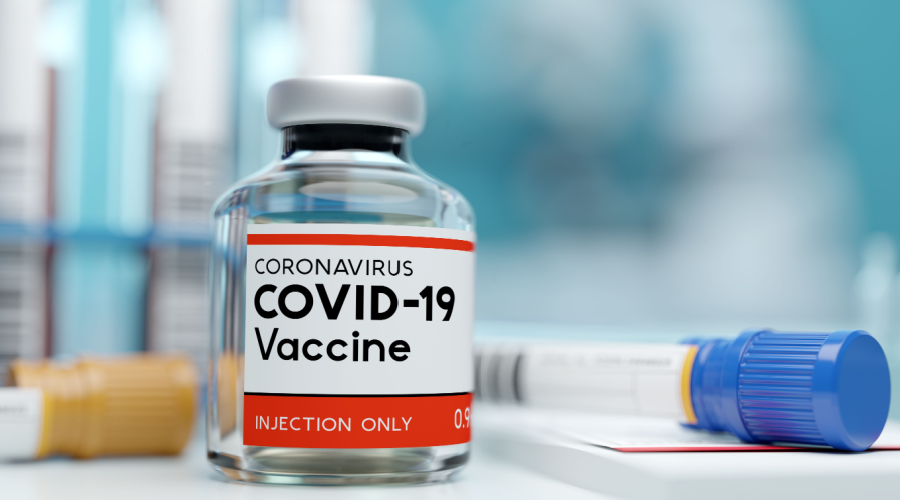In the midst of an industry-wide labor shortage, independent pharmacists are stretched thin trying to ensure proper coverage at their practices.
“There’s a huge problem,” said Linda Moran, founder and CEO of R.Ph.S., a pharmacy relief service that serves Oklahoma, Kansas, and Missouri. “It’s a supply and demand issue.”
For independent pharmacies that may only have one pharmacist on staff, finding relief is critical to keeping their business running. Even the most devoted community pharmacist will eventually need to take some timeoff.
When Moran was a pharmacist, relief was provided by retired owners in her community who would fill in for the new owner when they needed help, which wasn’t often. “When I started, it was a whole different dynamic. In the small towns, pharmacists almost never took time off because there wasn’t someone to relieve them,” she said. “If they were sick or needed surgery, they would have to close the store.”
Nowadays, most independent pharmacy owners can’t afford to close shop and don’t have consistent help to rely on. “They don’t necessarily have a list of people they can call to help keep the store open if the pharmacist needs to take some time off,” said Luis Balaguer, vice president of the pharmacy staffing agency RPh on the Go. That’s where staffing agencies like Balaguer’s and Moran’s come in. “We’re simply trying to help pharmacies stay open, especially the independents.”
Both R.Ph.S. and RPh on the Go typically place relief pharmacists into pharmacies for short stints—a few days or a week, often for a short vacation or a holiday weekend. “Anywhere a pharmacy needs a pharmacist, they call us and we try to match them up with a candidate who has called us looking for an opportunity,” Balaguer said.
One of the most common reasons for long-term relief is maternity leave. “Women make up a majority of the profession now, which means maternity leave is going to come into the picture,” Moran said.
R.Ph.S. also helps independent pharmacies through transitional periods. “A lot of places call us, and they’ve lost their pharmacist. Maybe they decided to go to law school or get their MBA,” Moran said. “There’s a transition before they are able to hire a new permanent pharmacist, and they want to use our services for a month or two months or three months.”
Finding relief
To partner with a relief service, pharmacies typically sign a contract for a specified amount of time, and then the service can step in and connect pharmacies with the staff they need. “The norm is a year, but we build a custom contract that depends on the pharmacy’s need,” Moran said.
Balaguer recommends establishing a relationship before you ever need relief so that when you do need to fill a position, it can be done quickly. “I think it’s always a good idea to partner with an agency and get the lay of the land early so you can understand requirements,” he said. “Get a contract in place and out of the way, and then when you have a need, you can just call and ask for help and don’t have to worry about the contract approval process.”
Finding the right person to work at your pharmacy can take anywhere from a couple of days to a couple of weeks. If a pharmacist is already credentialed and qualified to work in your state, you may be able to find a match within 72 hours, but turnaround isn’t always that fast. It’s best to request relief at least two weeks in advance, because it can take three to five days to get compliance done and another three to five days to make sure they are a good fit for your pharmacy, according to Balaguer.
R.Ph.S. has a long list of contractors that they reference to find a pharmacist who is in the right place at the right time. “When we need to fill a position, it’s all about staying on the telephone and calling people,” Moran said.
Before hiring a relief pharmacist, it’s a good idea to interview to the candidate. “I would suggest that any time you have a pharmacist coming into your facility that you at least talk to them on the phone,” Balaguer said. “That way you can make sure to get answers to any questions that you have and answer any questions the relief pharmacist might have, and be sure that it’s a good fit.”
Prepping your pharmacy
Relief pharmacists don’t have weeks to get trained on all of your pharmacy’s standard operating procedures—they need to hit the ground running. To make sure your relief pharmacist can handle things while you’re away, let the relief service know the basics of your business. This includes workflow information like pharmacy management software and your typical daily volume, as well as more mundane information like your pharmacy hours and how to get into the building. “We try to gather as much information as possible to really understand what the client’s needs are so we can to match them up to the candidate’s experience,”Balaguer said.
There are a few things you can do to make the transition easier, like dedicating a point person to meet the pharmacist to give them an overview of the pharmacy workflow. Set up the pharmacist’s computer access and any other accounts they’ll need before they arrive. Send additional information to the relief agency or directly to the pharmacist in advance: onboarding documents, training materials, technology education, etcetera.
Communicate your expectations about the relief pharmacist’s duties very clearly. “Maybe even provide some workplace culture dos and don’ts, because every pharmacy is different, and the last thing we want is to have a great pharmacist who is a mismatch because they don’t quite fit in with the culture,” Balaguer said.
Who works relief
When a relief pharmacist shows up at your pharmacy, what kind of person can you expect? “We get people who are all ages, all backgrounds, and all stages in their careers,” said Balaguer. “I remember we once had a pharmacist who was an actor, and he only wanted to work two days a week, so he did relief work.” Many of the pharmacists who work relief for RPh on the Go are either retirees or people who want to have a dynamic work life that involves travel.
Moran says that her base of relief pharmacists is mainly made up of retirees and women with young children. “There are a lot more women in the industry than there used to be, and when they have young children, they only want to work a few days a week,” she explained.
Relief work is ideal for pharmacists who want a lot of flexibility in their schedule. They are independent contractors, not employees, so they can pick and choose what jobs work for them. “We call them with a job, and if they’re busy, they just say they are busy, and then we go onto the next person,” Moran said. “They are in control of their own schedule.”
Balaguer agreed. “I think what makes this work so attractive is the pharmacists get paid for the hours they want to work, but they don’t necessarily have to deal with the constraints of a regular job. They want that independence,” he said. “They are running their own business, a lot like the independent pharmacists we work with.”
All relief pharmacists go through a battery of compliance checks, including a background check, drug screen, license verification, and a check for OIG exclusions. “That’s the very minimum that we need in order to get somebody to work,” Balaguer said. “On top of that is anything the client needs. Part of the contract process is understanding what all the compliance requirements are for that particular pharmacy. Our credentialing team can make sure that the pharmacist we send is qualified and can do everything that you’ve asked for.”
Strategic Staffing for Safety
You need more than the bare minimum of staff members to keep your pharmacy running safely. When pharmacists are stretched thin, they are more prone to mistakes, which can jeopardize patient safety. Last year, CVS was fined for making errors filling prescriptions because of insufficient staffing.
To avoid potential fines and prioritize patient safety, your pharmacy should always be “fully staffed”—never over-staffed or under-staffed—and you can fill in the gaps using a relief service.
Determine the best way to keep your pharmacy fully staffed by using one of the five strategic staffing models:
1. Staffing Quantity
Forecast the total headcount you need to keep the pharmacy running and compare that to your actual headcount. If your actual headcount is less than the forecasted headcount, you’re likely understaffed.
2. Staffing Quality Match — Person/Job
Align the characteristics and qualifications of individual staff members to the characteristics and qualifications needed for a position. The better these match, the more impact your staff can have on outcomes.
3. Staffing Quality Match — Person/Organization
In addition to matching the qualifications of a specific position, staff members should also align with the organizational values of your pharmacy. With this staffing model, employees can be flexible to the pharmacy’s needs and perform new tasks when asked.
4. Staffing System Components
This model relies on a back-and-forth between an applicant and the organization where each evaluates the applicant’s knowledge, skills, and abilities to come to mutually agreeable employment terms. By concentrating on professional development, the staff member can focus on organizational goals and safety policies.
5. Staffing Organizations
Create a staffing strategy with your pharmacy’s mission, goals, and safety objectives in mind. Aligning your staffing strategy with organizational goals ensures that all of your pharmacy’s core needs can be taken care of.
Sources: Staffing Organizations, McGraw-Hill; RPh on the Go
From the Magazine
This article was published in our quarterly print magazine, which covers relevant topics in greater depth featuring leading experts in the industry. Subscribe to receive the quarterly print issue in your mailbox. All registered independent pharmacies in the U.S. are eligible to receive a free subscription.
More articles from the December 2021 issue:
- Artificial Intelligence: Will Machine Learning Revolutionize Retail Pharmacy?
- Pharmacy Relief Agencies: How to Get Through Staff Shortages
- Risk Management Strategies for Small Businesses
- This Community Pharmacy Personalizes Patient Care Down to DNA
- National Retail Trend: Creating Your Own Brand of OTC Products
- Best Practices for Front-End Pharmacy Shelving
- Mental Health First Aid: Why Every Pharmacist Should Take the Training
A Member-Owned Company Serving Independent Pharmacies
PBA Health is dedicated to helping independent pharmacies reach their full potential on the buy-side of their business. Founded and run by pharmacists, PBA Health serves independent pharmacies with group purchasing services, wholesaler contract negotiations, proprietary purchasing tools, and more.
An HDA member, PBA Health operates its own NABP-accredited warehouse with more than 6,000 SKUs, including brands, generics, narcotics CII-CV, cold-storage products, and over-the-counter (OTC) products — offering the lowest prices in the secondary market.











